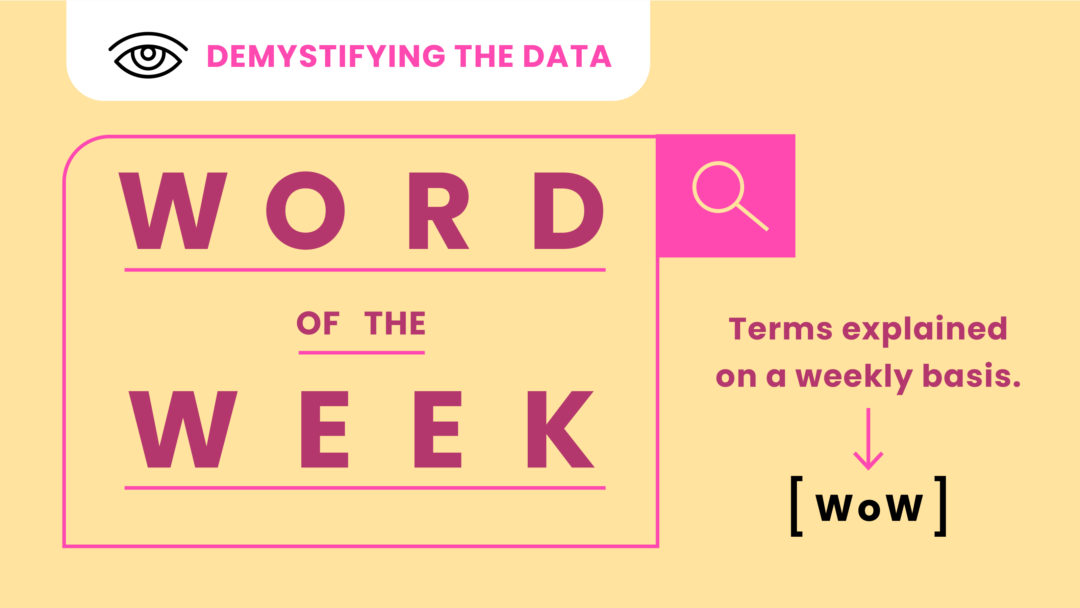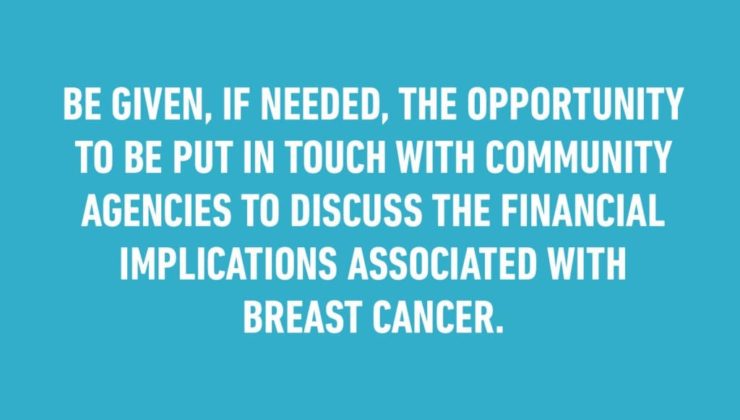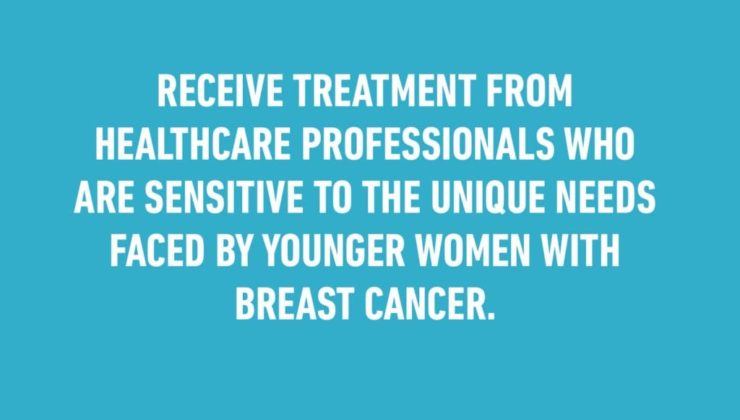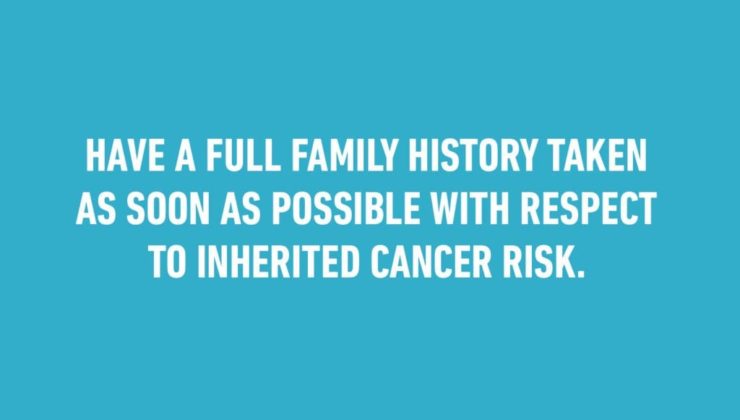Word of the Week — Demystifying Data

WoW (Word of the Week) was created to help demystify & explain terms specific to the clinical trial, research & treatment worlds so you can better understand some of the terms you may see used in the breast cancer space & as they relate to your diagnosis & treatment. This is an ongoing list that Rethink continues to add to!
September 2022
Word of the Week: Event Free Survival (EFS)
In clinical trials, EFS refers to the time from starting a treatment to any occurrence, such as growth of the cancer or severe side effects, that would end the patient’s participation in the study.
How your medical oncologist may explain it to you:
“EFS is when an event occurs that will stop your participation in the clinical trial which is usually the cancer returning or severe side effects.”
How you may see others with breast cancer posting about it:
This is a relatively new term in research and is not used frequently. This endpoint is not used consistently, but has been approved for use by the FDA.
How you may see it used in research:
“In patients with early triple negative breast cancer, neoadjuvant pembrolizumab plus chemotherapy, followed by adjuvant pembrolizumab after surgery, resulted in significantly longer event-free survival than neoadjuvant chemotherapy alone.”
Why it can be important to you:
The gold standard is overall survival, but it often takes longer to see those results, so other endpoints known as “surrogate endpoints, including EFS and PFS, may be used.
The endpoints in clinical research, such as OS, PFS and EFS, are very important to assess the benefit of treatments and to get those treatments licensed for use for patients to provide improved outcomes.
August 2022
Word of the Week: Progression Free Survival (PFS)
PFS is a term used in clinical trials that measure the time from starting on a new treatment until the cancer grows or progresses. When clinical trials report all the patients in the studies, they report the median or average PFS, which is the average length of time of the participants. It’s usually used in metastatic breast cancer.
How your medical oncologist may explain it to you:
“PFS is the time from when a person enrolls in a clinical trial and starts a treatment to when the cancer grows. It just means how long it takes for the cancer to start growing enough to suggest the treatment is no longer working and that the treatment should be changed.”
How you may see others with breast cancer posting about it:
“My new prescribed treatment showed a median progression free survival of 11 months in clinical trial. It’s not a long-term solution, but I’m hopeful it may work longer for me.”
How you may see it used in the public:
“NEWS: New research released at the medical conference showed longer progression free survival with the use of CDK 4/6 inhibitors in hormone positive metastatic breast cancer”
Why it can be important to you:
PFS is used in clinical research to determine if there are benefits to the treatment especially in MBC. It has become one of the standard endpoints used in clinical trial, similar to overall survival. PFS can be really exciting because it suggests a benefit from the treatment. It is usually seen before overall survival which may take many years. While PFS doesn’t necessary mean the treatment extends life, most of the time PFS results and OS results are similar.
Sources:
https://www.ncbi.nlm.nih.gov/books/NBK137763/
https://www.ncbi.nlm.nih.gov/pmc/articles/PMC6636299/
https://rethinkbreastcancer.com/glossary/
April 2022
Word of the Week: Overall Survival (OS)
Overall survival (OS) represents the length of time from either the date of diagnosis or the start of treatment for a disease, such as breast cancer, that patients are still alive.
In clinical trial data, OS is reported as the participants’ average length of time.
How your medical oncologist may explain it to you:
“How long a person is going to live. In a clinical trial it is the time from when a person enrolls in a trial to when they die, and usually it does not matter what they die of, even though we are most concerned about cancer deaths.”
How you may see others with breast cancer posting about it:
“I am almost a year out of active treatment and just on Tamoxifen. We’ve discussed Zoladex in the past and when my period came back last December he said that the combination of the two is the best in terms of overall survival, and we could talk about it.”
How you may see it used in the public:
“Breaking news: New research released at the medical conference showed improved overall survival with the use of CDK4/6 inhibitors in hormone-positive metastatic breast cancer”
Why it can be important to you:
Overall Survival remains the gold standard endpoint for new treatments being studied in clinical trials.
When treatments are shown to move the OS to a longer time, the treatment is deemed effective.
Sources:
https://www.breastcancer.org/managing-life/understanding-research
https://www.ncbi.nlm.nih.gov/pmc/articles/PMC6636299/
https://rethinkbreastcancer.com/glossary/
November 2021
Word of the Week: Pathological complete response (pCR) or complete response
Treatments given to weaken and destroy breast cancer before surgery are called neoadjuvant treatments and can include chemotherapy, radiation and even hormone therapy. Pathological complete response or pCR is a way of measuring the cancer’s response to treatments given before surgery, most often neoadjuvant chemotherapy.
pCR is an endpoint used specifically for neoadjuvant breast cancer trials.
pCR is a now a prognostic biomarker for excellent long-term outcomes at the individual patient level for those with early, high-risk breast cancer such as HER2 Positive or Triple Negative.
How your medical oncologist may explain it to you:
“no cancer left when the pathologist looks at the tissue the surgeon removed”
“no remaining cancer cells after breast surgery”
How you may see others with breast cancer posting about it:
“Any TNBC sister who’s cancer free for more than 5 years with NO pathological complete response from neoadjuvent chemotherapy and dmx (double mastectomy)? If so what did you do differently?”
Often the “pathological” gets dropped from more casual conversational posts:
“I was stage 3 TNBC 5.2 cm tumour and 2 notes positive. 8 rounds of chemo, bilateral mastectomy and 16 rounds rads. Had complete response to chemo. 6.5 years post diagnosis.”
“Well my surgeon called today to say I had a complete response to chemo!!!
The lymph nodes (3 from cancer side, 1 from the other) are clear and my breasts were clear! I had my bilateral done 2 weeks ago.”
“That’s so great!! I also had complete response. I was stage 2, er/pr-, her2+. The radiation oncologist wasn’t sure what to recommend because I had complete response. I did end up doing radiation.”
Why it can be important to you:
A pathological complete response is associated with a much better prognosis, especially for those with HER2 positive or Triple Negative Breast Cancer. Those who achieve a pathological complete response are at a much lower risk for having a distant recurrence or becoming metastatic.
It’s important to know that not having a pathologic complete response to chemotherapy before surgery doesn’t mean you won’t do well. Most women do not have a pCR to neoadjuvant chemotherapy.
Sources:
https://www.cancernetwork.com/view/relevance-pcr-breast-cancer-trials
https://www.breastcancer.org/research-news/survival-better-if-neoadjuvant-chemo-clears-nodes
https://www.fda.gov/media/83507/download
https://community.breastcancer.org/blog/sabcs-a-recap-of-triple-negative-research/








